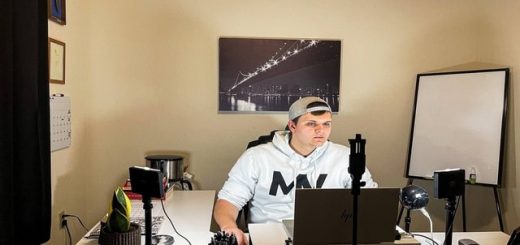Want More Search Traffic? Localise Your Site With SEO Proxies
You want more web traffic. That’s a feeling we can all relate to. Instead of endlessly searching for ways to get more eyes on your site, why not localise it for larger markets around the world? People often look to optimising keywords for SEO but disregard localisation in getting websites to rank higher in Google search. In this article, we’ll be explaining what localisation is and how you can localise your website for more web traffic and higher conversions.

What is localisation?
Localisation refers to the process of altering aspects of your website to suit different cultures. This involves much more than just translating your content. It can take the form of altering your site’s design or varying the content. For example, it’s been proven that testimonials are more valuable in the US than in certain European regions.
What are the benefits of localisation?
- Higher conversions: It comes as no surprise that people are more open to buying from your site if it’s in a language they’re fluent in.
- Local SEO improves: You can now create a unique URL for each customised version of your site to boost your rankings in that region.
- Your overall reach will increase: You’ll reach entire groups of people who were closed off to you beforehand.
A few things you should note before localising your site:
- Perform keyword research to determine what segments you want to target. This way, you’ll be able to determine how in-demand your services are in a particular region. This will help you make a more informed decision when you decide which region to optimise your content for.
- Evaluate where the bulk of your traffic is coming from. This will help you decide which language or country you should optimise your web content for, enabling you to get the most bang for your buck.
- Conduct market research to learn exactly how your site should be tweaked. How can you best reach your new target audience? You’ll also need to develop a way to ensure any changes you make on your main site are reflected on the localised versions.
How can you localise your site?
- Research your competitors in your target market with SEO proxies.
If you’re looking to take your localised website to the next level, you need to know who your competitors are and what they’re doing differently from you. The most efficient way to do this is using SEO proxies to conduct a website audit on your competitors.
Here’s the main idea: Instead of manually visiting each site and learning from it, you can set up an automated script to retrieve all relevant information and consolidate it into an Excel sheet. The proxy will prevent your IP address from being blacklisted due to the high number of web requests you’ll be sending out.
Information you can retrieve from these sites includes the most frequently posted topics, optimised keywords they use and their content strategy. If you want to learn more about how proxies can help your website’s localisation, check out Smartproxy blog.

- Use Google Translate or Automatic Translation to ensure your site can be read in different regions.
The benefits of this are obvious: It’s far more economical and faster than hiring a dedicated translator. Through automatic translation, you can even get the content on your site automatically translated to the localised versions when you make changes.
However, you need to be on the lookout for any translation errors, as they may come off as offensive or odd to your new audience. You may want to hire a native speaker for the editing stage, though by then, you would have already saved a decent amount compared to hiring a translator to translate everything from scratch. If you’re concerned about things getting lost in translation, identify phrases that must retain their original meanings. Collect them into a glossary and ask a native speaker how to best convey their meanings to your target audience.
Also, consider that different languages use different punctuation and lettering, so you’ll need to take this into account when you choose your fonts to preserve the overall look of your site.
- Perform a full functionality test.
Your site needs to be every bit as useful as it is pretty. As such, you’ll need to conduct thorough testing of the functions on your site. The end-user won’t appreciate hashes or broken links, so here are a few things to verify before taking your international site online.
- All of the fonts you used on your site must appear as intended on the end-user’s screen.
- Date, time and currency must be tailored to the target audience.
- The UI works smoothly (no odd hiccups during scrolling or when interacting with the site).
- Functional shopping carts, fast loading times and proper hardware compatibility are to be expected.
- Optimise your site’s design for your target country.
You might have to tweak your existing design to suit the country you’re targeting. For example, if the native language needs to be read from right to left, like Arabic or Hebrew, you might have to make adjustments.
A perfect example of this is a famous diaper company that advertised their diapers in Japan with a stork bringing a baby. Sales suffered, and they promptly discovered that in Japan, peaches bring babies, not storks. The moral of the story is: Being aware of these subtle cultural differences can go a long way in improving a visitor’s browsing experience. It’s not just alphabets and currency symbols that need to be changed; everything from hyperlinks to hotkeys must be customised to suit your target country.
- Ensure all legal requirements are met.
It’s not uncommon for different countries to have differing views on the same issue. For example, in certain regions, you could get in hot water if your site automatically collects user data or if you made a competitive claim against a competing business. By ensuring you meet all the necessary legal requirements, you’ll be able to avoid having your localisation timeline derailed. Also, see the reasons why you need a lawyer for your business.




